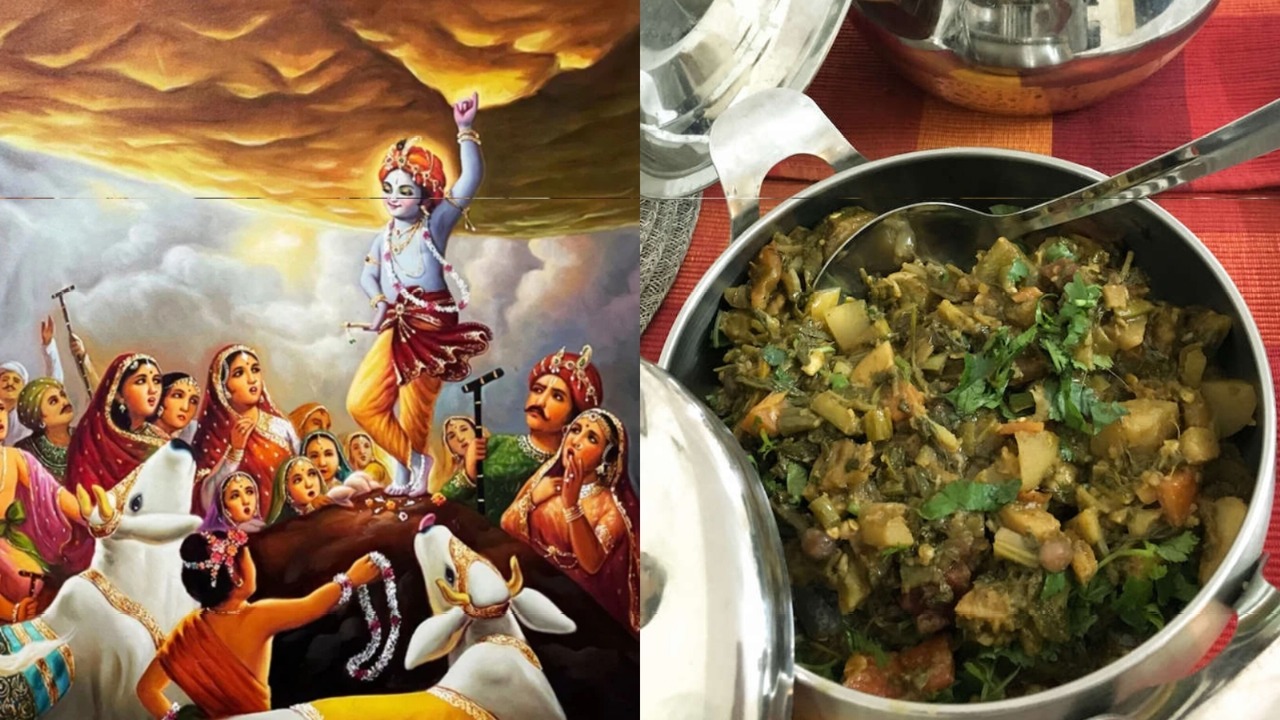Annakoot sabzi, made with 56 seasonal ingredients, is the centerpiece of Govardhan Puja’s chappan bhog. Celebrated after Diwali, the dish honors Lord Krishna’s protection of villagers and symbolizes gratitude and abundance. Its preparation blends devotion, tradition, and culinary richness, making it a sacred and festive offering across India.
As devotees across India celebrate Govardhan Puja, the spotlight falls on the traditional Annakoot sabzi—a vibrant, multi-ingredient dish that embodies the spirit of abundance and devotion. Prepared as part of the iconic chappan bhog (56 offerings), this sabzi is a culinary tribute to Lord Krishna’s legendary act of lifting Mount Govardhan.
Key Highlights From The Ritual And Recipe
- Annakoot translates to “mountain of food,” symbolizing the feast offered to Krishna after he protected villagers from torrential rains for seven days
- The sabzi is crafted using 56 seasonal ingredients, including eggplants, squash, green beans, radish, carrots, leafy greens, potatoes, sweet potatoes, raw banana, raw papaya, star fruit, tomatoes, gooseberries, and pomegranate seeds
- Aromatics and spices such as fresh turmeric, ginger, green chillies, bay leaf, and curry leaves add depth and warmth to the preparation
- The dish is cooked in large quantities and offered at temples and homes, often arranged in a mountain-like formation to honor the Govardhan legend
- Govardhan Puja, observed on the day after Diwali, marks Krishna’s defiance of Indra’s wrath and his message of nature worship and humility
- Families across regions replicate the chappan bhog tradition, preparing a variety of sweets, savories, and Annakoot sabzi as the centerpiece of the offering
Cultural And Spiritual Relevance
Annakoot sabzi is more than a festive dish—it is a sacred offering that blends mythology, seasonal produce, and community spirit. Its preparation is a collective act of devotion, often involving entire families and temple kitchens, reinforcing bonds and spiritual gratitude.
Tradition And Modern Adaptation
While the original recipe calls for 56 ingredients, many households adapt it based on availability, maintaining the essence of variety and reverence. The dish’s inclusive nature allows for regional tweaks, making it a living tradition that evolves while preserving its core symbolism.
Outlook
With growing interest in heritage cuisine and ritual-based cooking, Annakoot sabzi continues to inspire chefs, home cooks, and cultural enthusiasts. Its role in Govardhan Puja remains central, reminding devotees of Krishna’s teachings and the joy of shared abundance.
Sources: MSN News, Hindustan Times, Bhagwat Darshan, Indian Community

